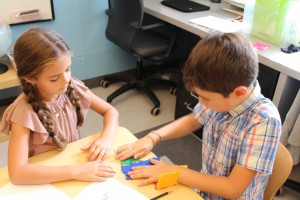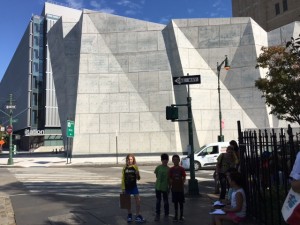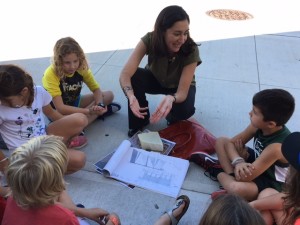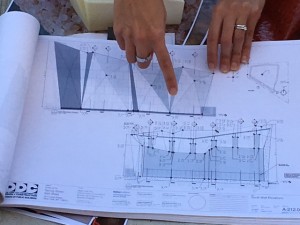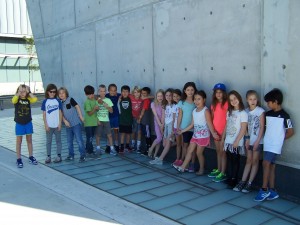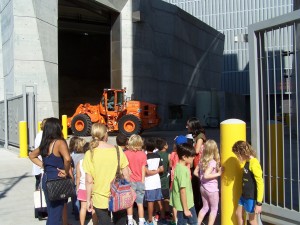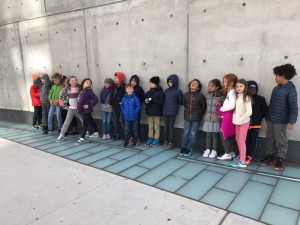How Many Nets Are There That Can Make Up a Cube?
A net is a two-dimensional figure that can be folded into a three-dimensional object. In the process of exploring this problem, third graders discovered deeper level mathematics along the way. They needed to pay attention to the number, shape, and relative position of a cube’s faces. The students found eleven nets that can be folded to make a cube. They rejected nets that, when turned, or flipped, were essentially the same net. Through this process, they discovered the mathematical concepts of transformations, and congruency. They identified the geometric attributes that make up a cube, such as six square units (area), and fourteen outside edges (perimeter). From here, the students examined and predicted fold lines in nets, as well as corners (vertices).
Where’s the Real World Relevance in Exploring the Math in Cubes?
The class visited the award winning Salt Shed, designed by the Dattner Architectural firm. The building was designed to resemble its use: To store salt for New York’s roads. Under a microscope, salt crystals resemble cubes that are clustered together. The design of the building has many faces and angles that reflect this. Dattner architects, Kirsten Sibilia and Gia Mainiero, were excited to show our third graders the building.


